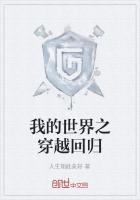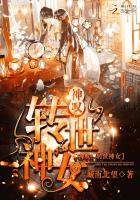This idea was perhaps the basis of the sympathetic telegraph of the Middle Ages, which is first described in the MAGIAE NATURALIS of John Baptista Porta, published at Naples in 1558. It was supposed by Porta and others after him that two similar needles touched by the same lodestone were sympathetic, so that, although far apart, if both were freely balanced, a movement of one was imitated by the other. By encircling each balanced needle with an alphabet, the sympathetic telegraph was obtained. Although based on error, and opposed by Cabeus and others, this fascinating notion continued to crop up even to the days of Addison. It was a prophetic shadow of the coming invention. In the SCEPSIS SCIENTIFICA, published in 1665, Joseph Glanvil wrote, 'to confer at the distance of the Indies by sympathetic conveyances may be as usual to future times as to us in literary correspondence.' [The Rosicrucians also believed that if two persons transplanted pieces of their flesh into each other, and tattooed the grafts with letters, a sympathetic telegraph could be established by pricking the letters.]
Dr. Gilbert, physician to Queen Elizabeth, by his systematic researches, discovered the magnetism of the earth, and laid the foundations of the modern science of electricity and magnetism. Otto von Guericke, burgomaster of Magdeburg, invented the electrical machine for generating large quantities of the electric fire. Stephen Gray, a pensioner of the Charterhouse, conveyed the fire to a distance along a line of pack thread, and showed that some bodies conducted electricity, while others insulated it. Dufay proved that there were two qualities of electricity, now called positive and negative, and that each kind repelled the like, but attracted the unlike. Von Kleist, a cathedral dean of Kamm, in Pomerania, or at all events Cuneus, a burgher, and Muschenbroek, a professor of Leyden, discovered the Leyden jar for holding a charge of electricity; and Franklin demonstrated the identity of electricity and lightning.
The charge from a Leyden jar was frequently sent through a chain of persons clasping hands, or a length of wire with the earth as part of the circuit. This experiment was made by Joseph Franz, of Vienna, in 1746, and Dr. Watson, of London, in 1747; while Franklin ignited spirits by a spark which had been sent across the Schuylkill river by the same means. But none of these men seem to have grasped the idea of employing the fleet fire as a telegraph.
The first suggestion of an electric telegraph on record is that published by one 'C. M.' in the Scots Magazine for February 17, 1753.
The device consisted in running a number of insulated wires between two places, one for each letter of the alphabet. The wires were to be charged with electricity from a machine one at a time, according to the letter it represented. At its far end the charged wire was to attract a disc of paper marked with the corresponding letter, and so the message would be spelt. 'C. M.' also suggested the first acoustic telegraph, for he proposed to have a set of bells instead of the letters, each of a different tone, and to be struck by the spark from its charged wire.
The identity of 'C. M.,' who dated his letter from Renfrew, has not been established beyond a doubt. There is a tradition of a clever man living in Renfrew at that time, and afterwards in Paisley, who could 'licht a room wi' coal reek (smoke), and mak' lichtnin' speak and write upon the wa'.' By some he was thought to be a certain Charles Marshall, from Aberdeen; but it seems likelier that he was a Charles Morrison, of Greenock, who was trained as a surgeon, and became connected with the tobacco trade of Glasgow. In Renfrew he was regarded as a kind of wizard, and he is said to have emigrated to Virginia, where he died.
In the latter half of the eighteenth century, many other suggestions of telegraphs based on the known properties of the electric fire were published; for example, by Joseph Bozolus, a Jesuit lecturer of Rome, in 1767; by Odier, a Geneva physicist, in 1773, who states in a letter to a lady, that he conceived the idea on hearing a casual remark, while dining at Sir John Pringle's, with Franklin, Priestley, and other great geniuses. 'I shall amuse you, perhaps, in telling you,' he says,'that Ihave in my head certain experiments by which to enter into conversation with the Emperor of Mogol or of China, the English, the French, or any other people of Europe ... You may intercommunicate all that you wish at a distance of four or five thousands leagues in less than half an hour.
Will that suffice you for glory?'
George Louis Lesage, in 1782, proposed a plan similar to 'C. M.'s,'
using underground wires. An anonymous correspondent of the JOURNAL DEPARIS for May 30, 1782, suggested an alarm bell to call attention to the message. Lomond, of Paris, devised a telegraph with only one wire; the signals to be read by the peculiar movements of an attracted pith-ball, and Arthur Young witnessed his plan in action, as recorded in his diary.
M. Chappe, the inventor of the semaphore, tried about the year 1790 to introduce a synchronous electric telegraph, and failed.
Don Francisco Salva y Campillo, of Barcelona, in 1795, proposed to make a telegraph between Barcelona and Mataro, either overhead or underground, and he remarks of the wires, 'at the bottom of the sea their bed would be ready made, and it would be an extraordinary casualty that should disturb them.' In Salva's telegraph, the signals were to be made by illuminating letters of tinfoil with the spark. Volta's great invention of the pile in 1800 furnished a new source of electricity, better adapted for the telegraph, and Salva was apparently the first to recognise this, for, in the same year, he proposed to use it and interpret the signals by the twitching of a frog's limb, or the decomposition of water.













